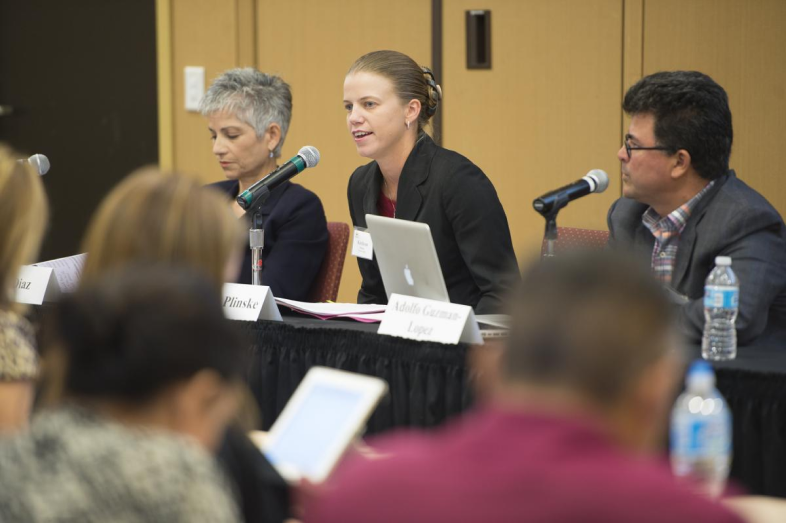

In recent years, the United States has seen overall enrollment declines in the numbers of students seeking postsecondary degrees, but in a panel about Latinos in higher education at the Education Writers Association’s second annual Spanish-Language Media Convening, the executive director of the Hispanic Association of Colleges and Universities reminded journalists of one area of growth: The number of Hispanic-serving institutions is on the rise and accelerating.
A college’s student body must be at least 25 percent Latino to be designated a Hispanic-serving institution and qualify for a special pool of government funds. HACU Executive Director of Legislative Affairs Alicia Diaz said that for several years it was normal for 15 to 17 new schools to become Hispanic-serving institutions by hitting that 25-percent threshold. For the 2015-16 school year, however, 39 institutions crossed the line.
HACU has member institutions in the United States, Puerto Rico, Latin America and Spain. It advocates for these institutions in Washington, D.C., engaging in a constant struggle for more funding and support.
“Representatives say to us, ‘Well, my state or my district doesn’t have an HSI,’” Diaz said. “I say, ‘Not yet.’”
Almost half of HSIs are two-year colleges, one of the most outstanding of which is Valencia College, host of EWA’s 2015 seminar for journalists working in the Spanish-language media. Valencia was named the best community college in the nation by the Aspen Institute in 2011. Kathleen Plinske, campus president of the Osceola and Lake Nona campuses, also spoke in the EWA panel, which was moderated by Adolfo Guzmán-López of Southern California Public Radio.
Plinske said one key to their success is the belief that under the right circumstances, any individual can learn anything they want to.
Many Valencia students doubt their intellectual capacities for college, Plinske said. They also often do not think they have the money to attend. Support services and outreach efforts help convince students they are capable and they can afford college, with aid. Tours help high school students picture themselves on campus, and pathways for coursework and counseling help college students achieve their goals.
But while schools like Valencia see great success at serving Latinos students, they are at a disadvantage when it comes to funding. So far, Latino students get just 69 cents of every dollar distributed to students nationwide, according to Diaz, who said the funding disparity is caused by inequitable investment by government at all levels. This year, there wasn’t a cut in the approximately $100 million HSI colleges could compete for, but Diaz doesn’t see that as a win.
“If there are more schools and more students and the same amount of funds,” Diaz said, “that means a cut.”